Report Back.
Hope you all had a Good
Mother’s Day
There is a need for extra Love Quilts.
Erichka has taken an Executive decision to make 2 more Love Quilts. Quilters to please get sample pattern and colours from Erichka direct. We will also be needing 2 more bags to keep the quilts clean and ready for delivery.
Love quilt and get well wishes go to Reinette Nel who is recovering from surgery. Also well wishes to Tertia who’s Father is sick.
With great sadness sincere condolences to Grace on the death of her Father.
Craft Table requires more items for sale.
Auction Thread on wooden cotton reels were sold to Tertia for R150 The money was given to Margaret Bowyer’s Friend who was selling these Thank you to QQ her friend was really thrilled to receive so much
From the Heart.
Thanks to all for the donations and funds raised for The Children of Fire amounting to R4000 to date.
We have also received 150 Knitted Teddies well done Ladies
CHOC ---- Knitted scarves are also growing in leaps and bounds. Bev Dutton’s Aunt fixed and donated 47 scarves, which she acquired from a factory outlet …. These rejected scarves have small flaws which Bev has fixed. We need a few volunteers to fix another bag of scarves which have also been donated.
Nola has asked for further help with this charity … power outages and the increase of Escom Tarriffs make it necessary to economize on electric heating so bed socks are the new project and will help in keeping patients cosy.
Other needs .. old clothes for GoSizwe and more cushions for the SPCA.
Yvonne and Suzen are asking for Orphan Blocks either 12” x 12 “or 12” x 10”.These do not have to be finished off These will be used to raise funds for an orphanage in Bronkhurstspruit.
SAQG
The challenge is for the 2011 festival hosted by the Good Hope Quilters Guild
.This is a quilt challenge,the theme being “Showtime”
.R100 entry includes the entry & fabric(black & white)
Packs for the challenge can be collected from
Carolyn Kode,tel # (011) 880-8833,
however,out of 100 packs issued,only 9 are still available
Inspiration …
PARENTING
JOB DESCRIPTION:
Long term team players needed, for challenging, permanent work in an often chaotic environment.
Candidates must possess excellent communication and organizational skills and be willing to work variable hours,
which will include evenings and weekends and frequent 24 hour shifts on call.
Some overnight travel required, including trips to primitive camping site on rainy weekends
and endless sports tournaments in far away cities! Travel expenses not reimbursed.
Extensive courier duties also required.
RESPONSIBILITIES:
The rest of your life.
Must be willing to be hated, at least temporarily, until someone needs R50.00.
Must be willing to bite tongue repeatedly. Also,
Must possess the physical stamina of a pack mule and able to go from zero to 60 mph in three seconds flat in case,
This time, the screams from the backyard are not someone just crying wolf.
Must be willing to face stimulating technical challenges, such as small gadget repair,
Mysteriously sluggish toilets and stuck zippers.
Must screen phone calls, maintain calendars and coordinate production of multiple homework projects.
Must have ability to plan and organize social gatherings for clients of all ages and mental outlooks.
Must be willing to be indispensable one minute, and a total embarrassment the next.
Must handle assembly and product safety testing of a half million cheap, plastic toys, and battery operated devices.
Must always hope for the best but be prepared for the worst.
Must assume final, complete accountability for the quality of the end product.
Responsibilities also include floor maintenance and janitorial work throughout the facility.
POSSIBILITY FOR ADVANCEMENT & PROMOTION:
None.
Your job is to remain in the same position for years, without complaining,
Constantly retraining and updating your skills, so that those in your charge can ultimately surpass you.
PREVIOUS EXPERIENCE:
None required unfortunately. On-the-job training offered on a continually exhausting basis..
WAGES AND COMPENSATION
Get this! You pay them! Offering frequent raises and bonuses.
A balloon payment is due when they turn 18 because of the assumption that college will help them become financially independent.
When you die, you give them whatever is left.
The oddest thing about this reverse-salary scheme is that you actually enjoy it and wish you could only do more.
BENEFITS:
While no health or dental insurance, no pension,
no tuition reimbursement,
no paid holidays and no stock options are offered;
this job supplies limited opportunities for personal growth,
unconditional love, and free hugs and kisses for life if you play your cards right. And, THERE IS NO RETIREMENT – ever!!!
Natural Dyes - Tropical dyes from wood
Article on Natural Dyes by Teresinha.
Brazilwood, logwood and fustic are famous traditional natural dyes that produce bright colours on wool, cotton and silk; brazilwood yields rich reds, logwood purples and fustic strong yellows. These three dyes are made from the heartwood of medium to large trees originally found in tropical forests. With proper care, all three dyes have a good light-fastness. Eventually they mellow to paler but still pretty colours.By late 1500’s large quantities of brazilwood, logwood and fustic were imported into Europe from Latin America.
These three new dyes cost much less than those previously available therefore allowing more people to have colourful clothes.
Brazilwood is found both in Asia and Latin America and Brazil takes its name from the tree. The wood comes from several species of Caesalpinia trees and it gives lovely rich reds.Even though I was born and brought up in Brazil, I never saw a brazilwood tree, never read about the fiery reds it produces and was never taught that the word brazil comes from the Spanish brasa which means glowing embers. It was only when I came to live in England and became interested in natural dyes that I learnt more about this tree. I was very surprised to learn that my country of birth was named after the wood found there, rather than the other way round.Brazilwood, however, was well-known for centuries, long before Brazil was discovered by Europeans; it was first mentioned as a dye in 1321, sourced from East Indies and India.Most of brazilwood sold as a dye now comes from Asian trees. The species from Brazil, Caesalpinia echinata, is also known as pernambuco and is sometimes referred to as the music tree because its wood is used for making violin bows
Logwood dye is made from the heartwood of Haematoxylon campecianum, a forest tree from Central America. Haematoxylon literally means blood wood and it refers to the colour of the heartwood, while campecianum refers to the city of Campeche in the Yucatan peninsula in Mexico where this tree was abundant. Logwood was floated down rivers as large logs, hence its name.Logwood chips produce purples, greys and blacks, the colours depending on the mordants used and the acidity of the dye bath. The dye haematoxylin produced from logwood is still used as histological stain for microscopic slides.
Old Fustic, or Dyer’s Mulberry, is made from the heartwood of Maclura tinctoria, a medium to large tree of the mulberry family originally found in the forests of Brazil and the West Indies. It is a beautiful wood for wood turning and is then known as Amarillo, which means yellow in Spanish.Fustic yields a range of colours from strong dark yellows to an attractive peach colour on silk, cotton and wool and it has good light-fastness. It was used extensively from about 1600 to 1850, as it produces a strong colour at low cost. During the WW1, fustic was one of the dyes used to produce khaki for army uniforms.
Quilt Class
A Quilt Sleeve lets you hang your Quilts
Learn how to make a quilt sleeve
You will need to add a quilt sleeve on the back if you intend to hang your quilt or wall-hanging. You can slide a rod or dowel through the sleeve and hang it on two nails.
Most quilt shows also require a sleeve on the back of your quilt to facilitate hanging the quilts.
Here's how to make a 4” sleeve. Measure the width of your quilt, then cut a strip of fabric 8 ½” wide, by that length. For a large quilt, you may have to sew two strips together to get the length required. For a small wall hanging which is not going into a show, you can make your sleeve narrower.
Fold your strip of fabric in half and press. Fold the end in ½” and then again ½” and sew. Repeat at the other end. If you hav e not yet sewn on the binding, pin the sleeve to the upper edge of your quilt, flush with the edge. As you are sewing your binding on to your quilt, you will sew through the sleeve and secure it. In order to secure the lower edge of your sleeve, you must hand stitch it through the back of the quilt only. In order to accommodate the dowel or rod, push the outer layer of your sleeve up about ¼” and pin in place. Hand sew the side next to the backing. Viola!If you want to add a sleeve to a quilt which has already been bound, cut as above, and with right sides together, sew a ¼” seam along the long edge to make a tube. Finish the ends as above. Pin the tube to the top of the back of your quilt just below the binding, and hand stitch along the top edge. Finish the bottom edge as above.
Friday, June 4, 2010
Subscribe to:
Post Comments (Atom)











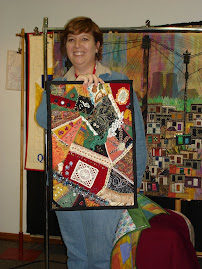
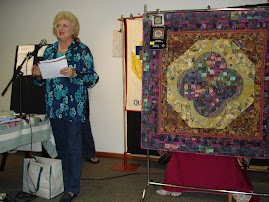
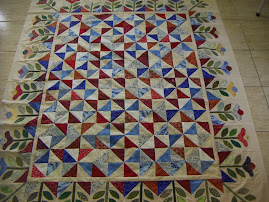
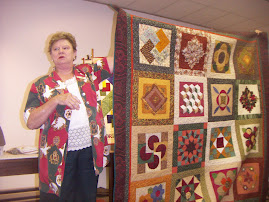
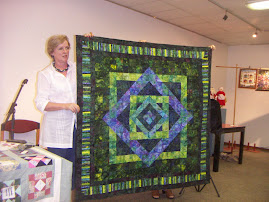Tilly+de+Harde+Where+have+all+the+Butterflies+Gone..jpg)
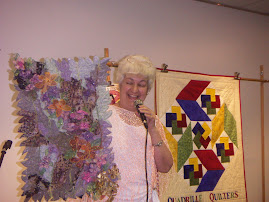Colleen+Harris+Midsummer+nights+dream.jpg)
.jpg)
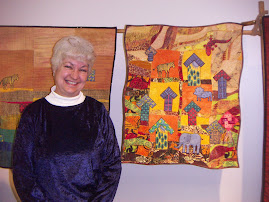
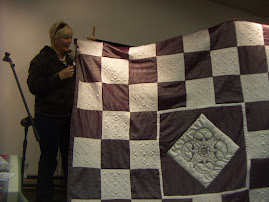.jpg)
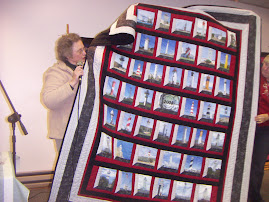
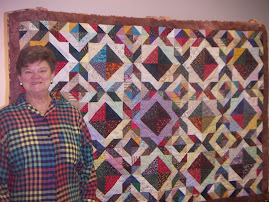
Rosemarie+Eriksson+Embroidered+quilt.jpg)
Berlize+tulip+quilt..jpg)


.jpg)
+Mary+Ash+Baltimore.jpg)


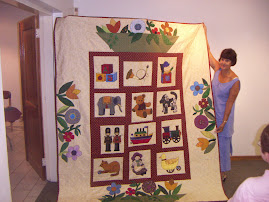
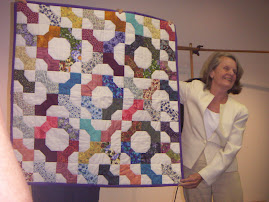
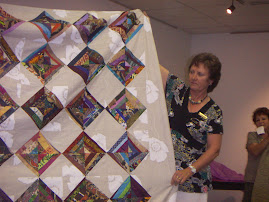
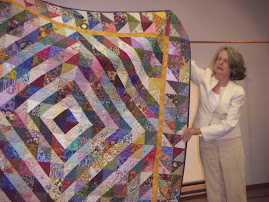
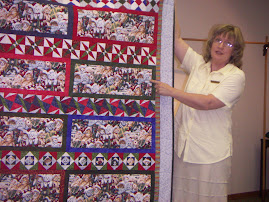




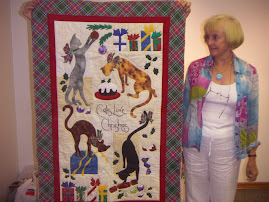
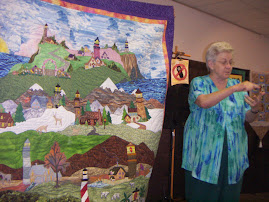

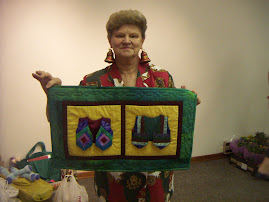
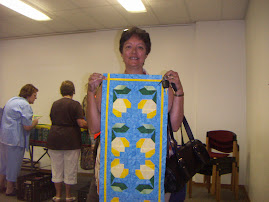
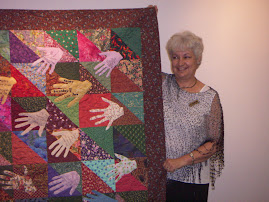
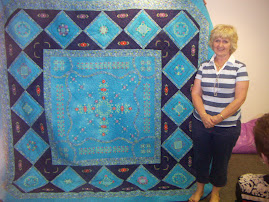
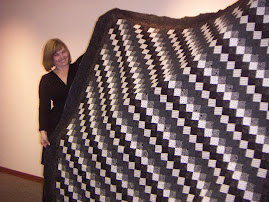
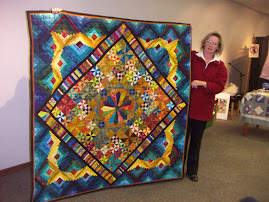
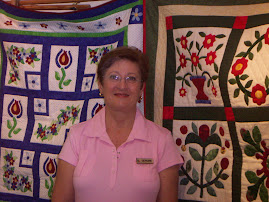

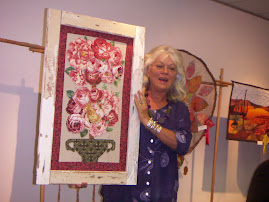
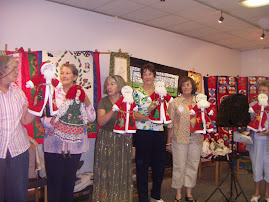.jpg)
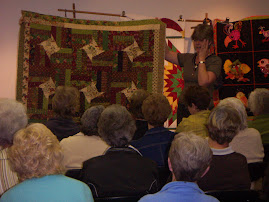.jpg)

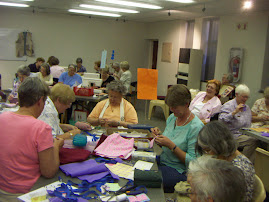
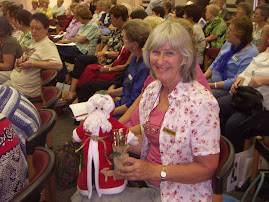
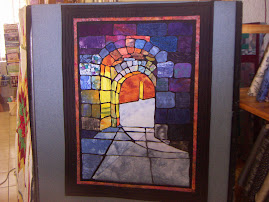
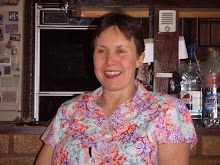


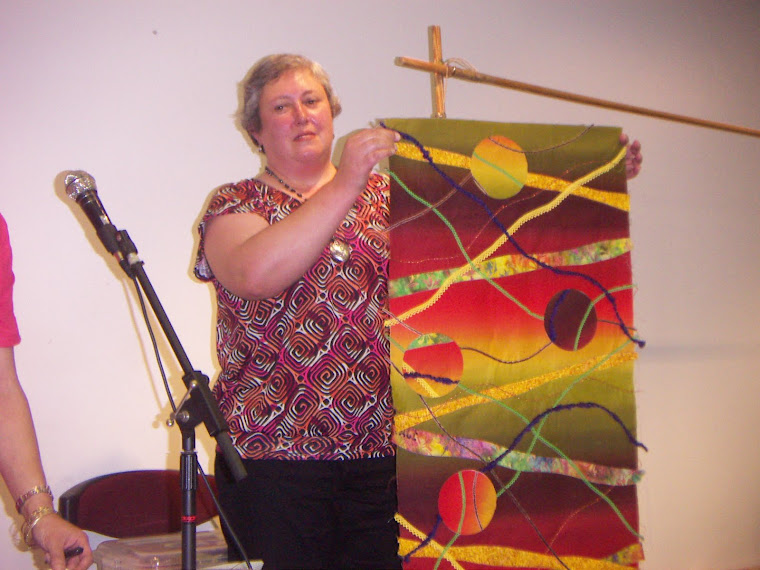Tertia+Darn+Quilt.jpg)
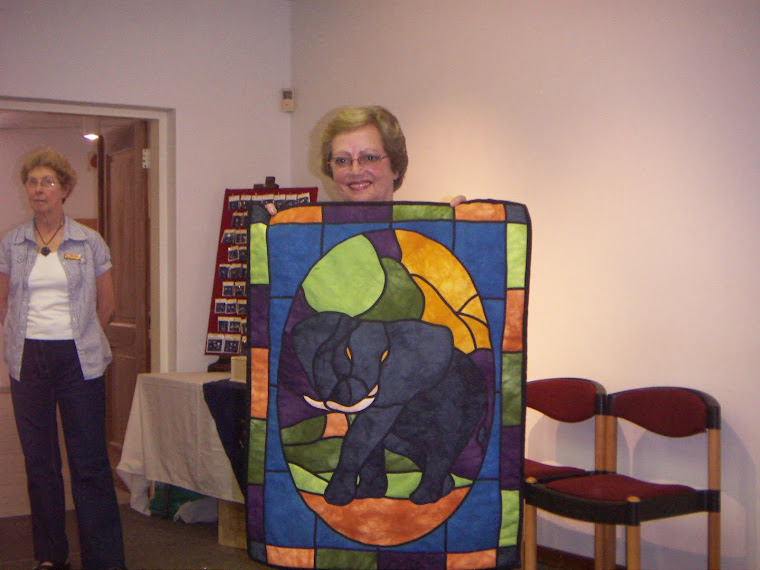Yvonne+jordan+Elephant+quilt.jpg)
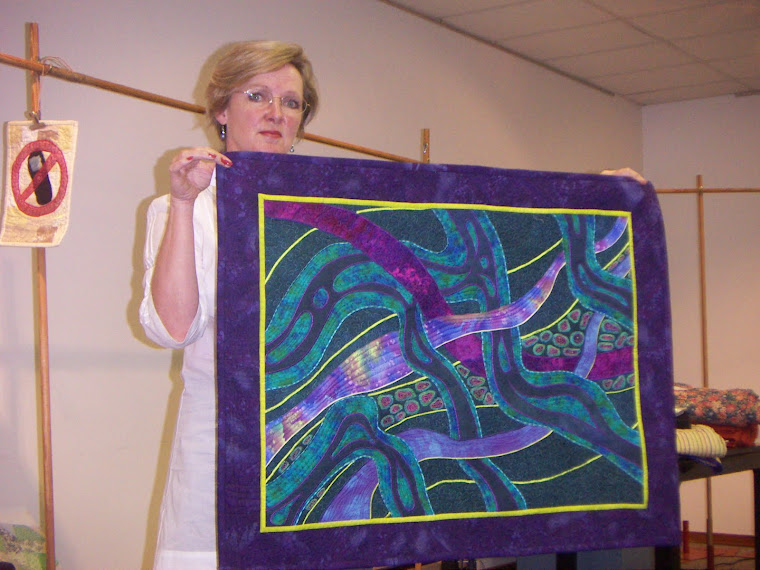Tilly%27s+Goodbye+to+the+Grid.jpg)
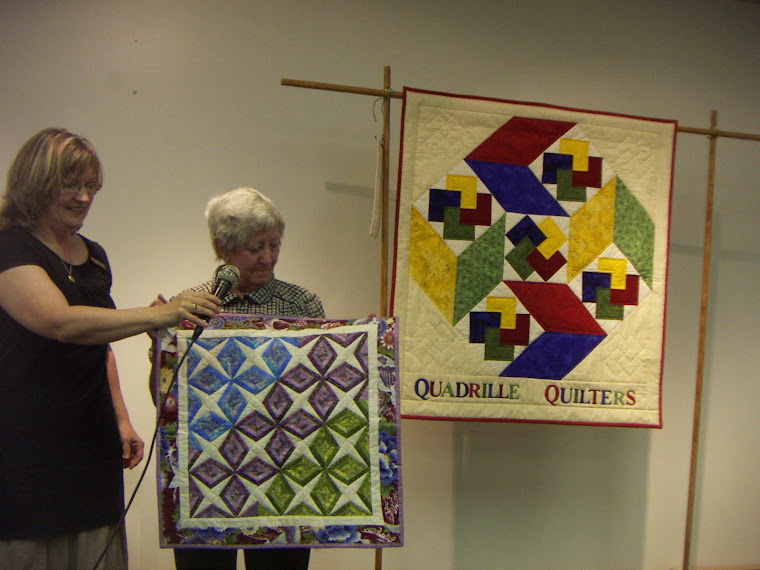
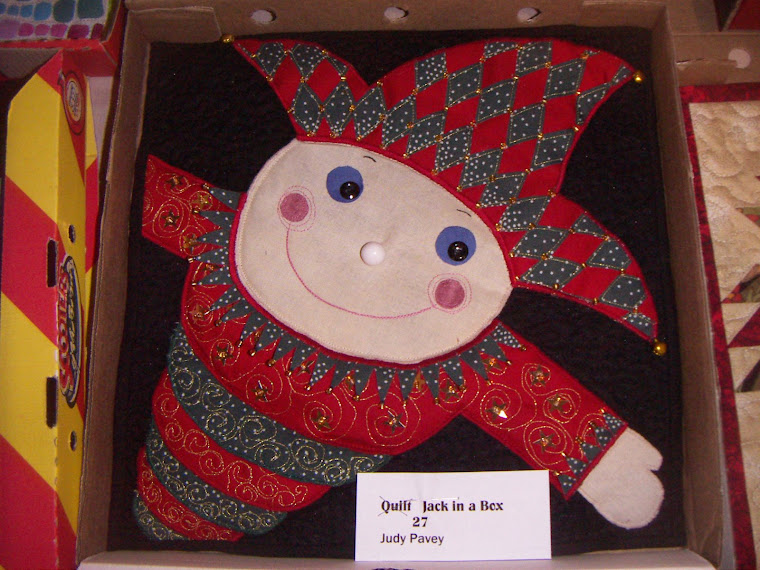
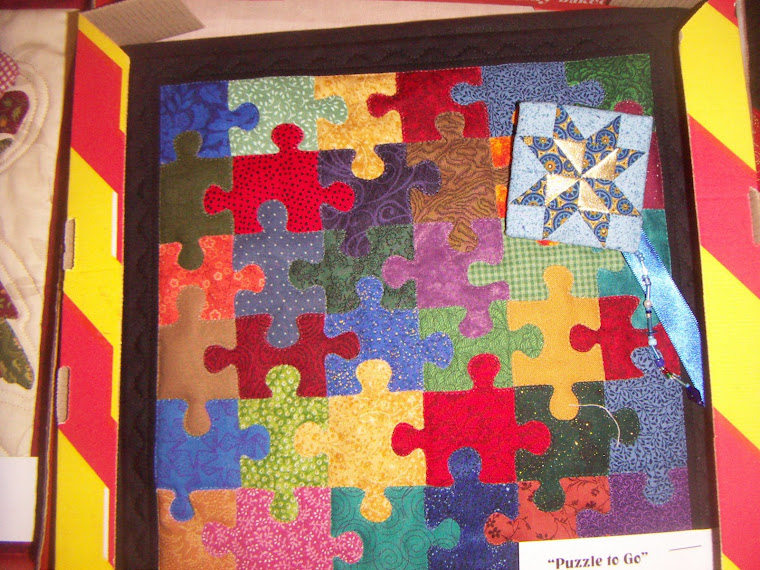
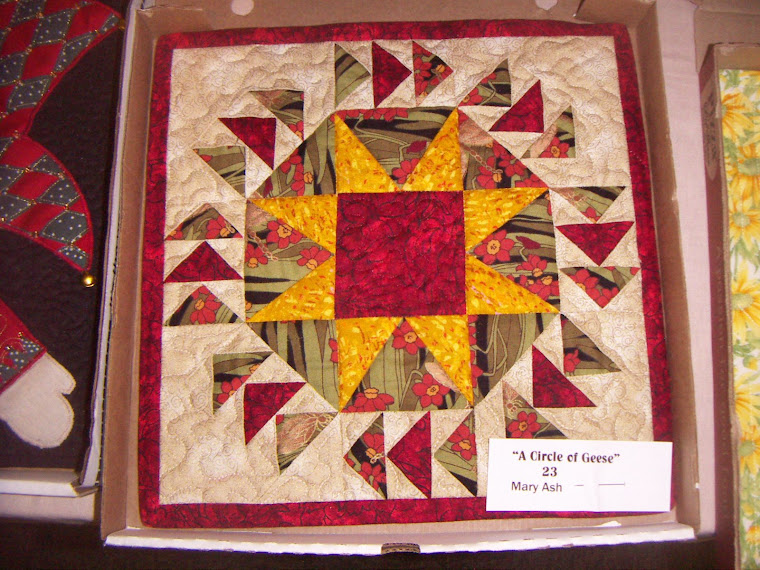
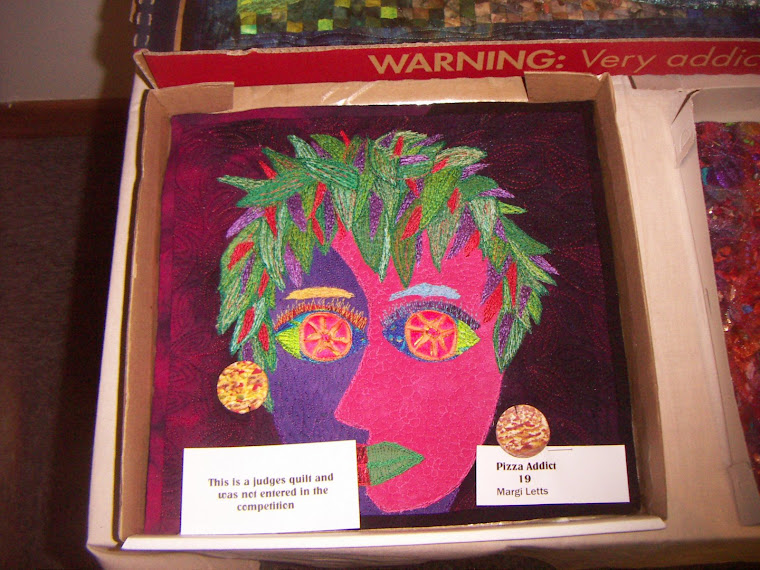
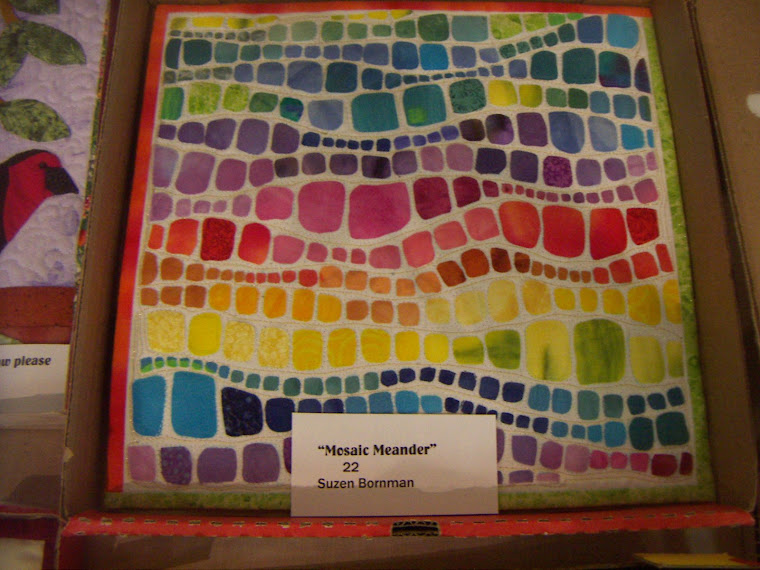
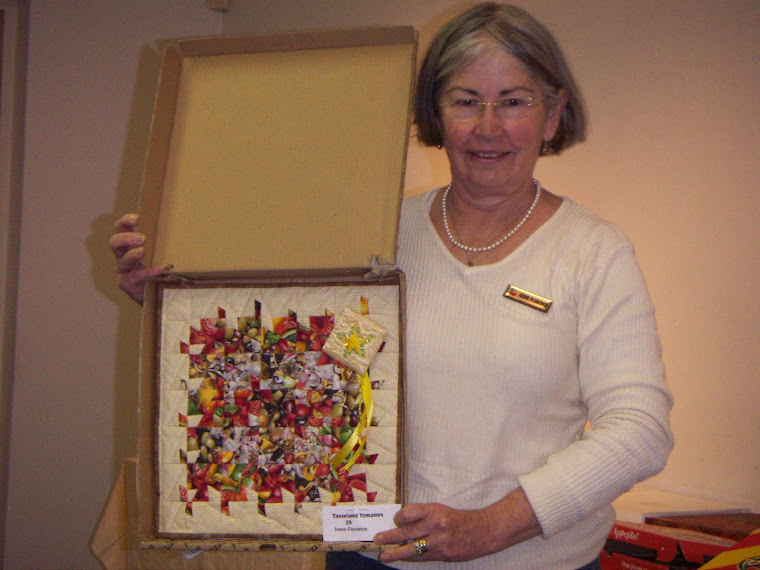


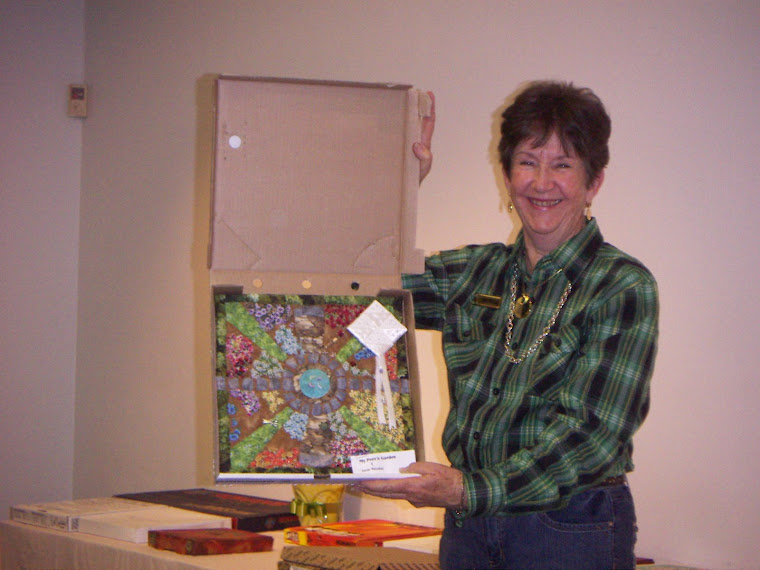


Dorinda%27s+Stack+and+Whack.jpg)
.jpg)
Ira%27s+landscape+lighthouse..jpg)
.jpg)


.jpg)

.jpg)




.jpg)

No comments:
Post a Comment